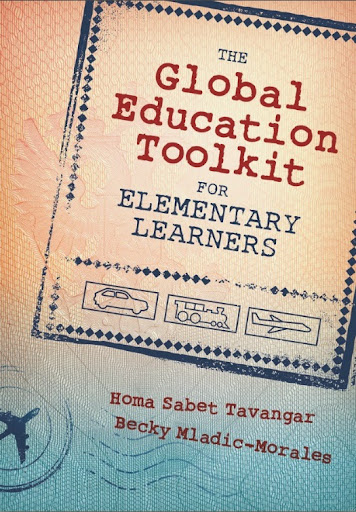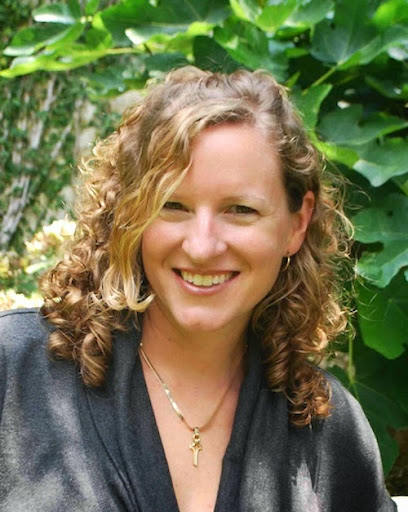Global Education Toolkit for Elementary Learners
Global education - it's the most powerful tool we have to succeed in the world today. The world is getting smaller, and people that have global competence, knowledge, and skills will have a definite advantage. And we all know that the earlier someone starts learning, the more powerful the lifelong impact, both personally and financially.
What can learning about the world do for your kids and students? They'll become global citizens, caring about people and cultures and lands. They will be aware that the world is a big place, and that difference is interesting and exciting.
What better way to introduce the world to kids than to start young? And I've found the perfect guide to help parents and educators to share the world with kids. The Global Education Toolkit for Elementary Learners, written by educators Becky Mladic-Morales and Homa Tavangar, is a hands-on guide full of inspiration, direction, and concrete activities and ideas to get classrooms (and homes) globalized. It's a joyful, fascinating, and intelligent guide to facilitating global learning - and, as the book notes,
Our children’s success depends more than ever on their ability to communicate and work effectively across cultures, to adapt to rapid changes in the ways complex problems must be solved, and to realize that not everyone thinks like they do. The sooner they start thinking about the wider world, the better they’ll do—not because they are motivated by panic or competition but because they enjoy interacting with new friends around the world, discovering new interests, and imagining doing big things in it. This positive approach can help them to flourish in life.
With such an extraordinary guide, classrooms and homes have an easy to implement, culturally aware path to creating international educational opportunities for kids - and having fun along the way. Kids love to learn - and they love to learn about other kids! The book is filled with activities, ideas, ways to include technology, thoughts about service learning and philanthropy, and, perhaps the most invaluable, professional development resources for educators to increase their own global competence.

This book is, by far, the best book I've ever read about early elementary global education. It's a handbook, guide, inspiration, and meaningful approach to teaching kids about the world. If you're a teacher or a parent of K-5 kids (or earlier), this is the most important item you can have to teach them curiosity, global competence, and intercultural knowledge. With this start, they'll be engaged global citizens, interested in the world.
Highly recommended!
We had a chance to catch up with Becky Mladic-Morales, to ask her about the book, inspiration, global competence, technology, and more. Here's what she had to say...

Please tell us about your book, The Global Education Toolkit for Elementary Learners...
The Global Education Toolkit for Elementary Learners is a collaborative project, written by me (Becky from www.kidworldcitizen.org) and Homa Tavangar (growingupglobal.net). What began as a small ebook that would help teachers start an international week turned into a complete toolkit that helps schools incorporate global learning across all disciplines and grade levels. Many teachers are interested in increasing their students' knowledge about the world but haven't found the right activities to incorporate into their existing lessons. The 5 chapters contain numerous activities that can be used on their own or altogether.
Chapter 1—How to Get Started: Planning Considerations for Bringing the Global to Your School. The information in this chapter helps teachers, staff, and volunteers take the first steps, ask the right questions to determine the scope of their efforts, determine themes, and build support.
Chapter 2—Things to Do: Look at All the Places We Can Go! This is a stand-alone resource of over 50 globally inspired ideas that you could implement immediately, in any setting.
Chapter 3—Infusing Global Learning Into Academic Subject Areas (With Special Consideration for Aligning Common Core Standards). This chapter offers a breakdown by subject areas, so global learning can be plugged right into various academic subjects and themes. It also showcases examples of lessons that meet Common Core Standards.
Chapter 4—Technology Tools to Connect With the World: Unlocking Global Education 2.0. Tap into some of the best and simplest interactive, digital tools to build relationships with people, places, and ideas in the wider world, as well as enhance your own professional development.
Chapter 5—Charitable Giving and Service: Ready, Set, Make a Difference! Develop your school, club, or classroom's plan for making a difference—near or far. Get inspired by—and learn from—dozens of examples shared in this chapter, of elementary school–aged kids engaging in philanthropic giving and service, to start your own initiative.
What inspired you to write this book?
Like a match made in "21st Century" heaven, we met on twitter! I still hadn't discovered the power of social media to grow my PLN, but was following and admiring Homa's work, when I saw her call for writers for this project. We both have a passion for global education, and found that there was an absence of materials for the younger grades. As a high school teacher who always tried to incorporate cultural lesson in my Spanish and ESL classes, I saw that students were missing basic knowledge about the world and knew that we needed to start younger. After more than a year of research and speaking with schools around the US and the world, we compiled the best lessons, organizations, web sites, and activities are accessible to all teachers. We hope that the resources we found will help all teachers along a path of discovery and encourage lifelong learning.

Learn about Liberia: Facts, History, and Culture
Let's talk global competence - why is it important to start kids young? How will this influence their lives?
Years ago, when I began to teach Spanish in a local high school, I was shocked at the lack of geography skills and basic cultural awareness I witnessed. Pointing to a map of Europe and Africa, I had been talking about the Islamic architecture in southern Spain and the influence of Arabic on certain Spanish words. As I pointed to Morocco and North Africa, I asked the students to name the continent. In class after class, students incorrectly answered "South America." National Geographic confirms that geography is taught by less than 9% of K–12 social studies teachers and not even one quarter of high school students graduate with a geography class.
I want my students to graduate from high school with a global mind-set, a friendly attitude toward people of different backgrounds, and an awareness beyond their immediate community. Nonetheless, I understood that these lessons of our interconnectedness should begin much earlier and should be an integral part of all of their subjects. Teachers and parents of elementary-aged kids can—and should—take the initiative to give them the opportunity to see issues from different perspectives and communicate with and learn from peers around the world. In this book, our aim is to help educators to do so, offering very practical tools.
The world is more interrelated today than ever before, and parents, schools, and businesses are pushing to change the way schools teach and prepare our students for the 21st century. Are we preparing today's youth for the international challenges they will face tomorrow? How can we start building a global foundation for our younger students? I think children are never too young to begin learning about the world, especially when the activities are fun and interactive.

Day of the Dead Skeleton Craft
How has the internet affected classrooms, globally? How can both teachers and parents utilize the internet to bring the world into the classroom - and the home?
As we explain throughout The Global Education Toolkit, global education goes way beyond food, fun, and festivals, and it's also much more than going online to research standard information about a foreign country. Used properly, technology tools can build relationships near and far much more quickly, profoundly, and conveniently than ever before imagined. When they are creating opportunities for interaction, really getting to know people and situations regardless of their location, touching hearts, and teaching empathy, then the technology has done something amazing. We think of this as Global Education 2.0, where it's ultimately about meaningful connections, not amassing apps and web links.
We tried to help tap into and demystify education technology (#edtech) tools as a means of enhancing the experience of global learning and to build global competence.
I love the section on Global Education Professional Development and Resources - and that international education as something that can be woven into curriculum (and lives). What is your advice for teachers (besides reading this book!) to get started?
I think a great first way to start is to get on twitter and begin to network with other likeminded teachers. It takes 1 minute to set up, and you can reach out to classes and schools from literally every corner of the globe. Here is an easy tutorial for twitter: http://kidworldcitizen.org/2014/07/04/twitter-teachers-education-hashtags-build-pln/
Through your newly found relationships on twitter, you could try a skype conversation, and have your class interview another class. There are infinite topics and ways to incorporate learning: http://kidworldcitizen.org/2012/02/06/how-to-skype-with-kids-around-the-world/

5 Must-Haves in a Bilingual, Print Rich Environment
Where can educators and parents find out more?
KidWorldCitizen.org has hundreds of ideas to help parents and teachers teach their kids about the world, including many from The Global Education Toolkit. Our book is available as a print book or an ebook on amazon.

What does the First Day of School Look like Around the World?
What's up next for you?
I'm continuing to build up my web site, so that it is the best place to find global education activities on the web. I also enjoy running workshops and teacher trainings, to help schools realize the possibilities to increase their students' cultural awareness and global learning.
Is there anything else you'd like to share?
If you are interested in learning more about the components of Global Education, check out this post: http://kidworldcitizen.org/2014/02/13/components-of-global-education

Also, I would love to connect with interested parents and teachers on facebook and twitter. I get emails asking for my "matchmaking" advice, when a classroom is looking for a partner class or sister school around the world - it is so fun to match up classes.
Learn more about The Global Education Toolkit at http://globaledtoolkit.com/
All photos courtesy and copyright Becky Mladic-Morales
-

- Log in to post comments





















